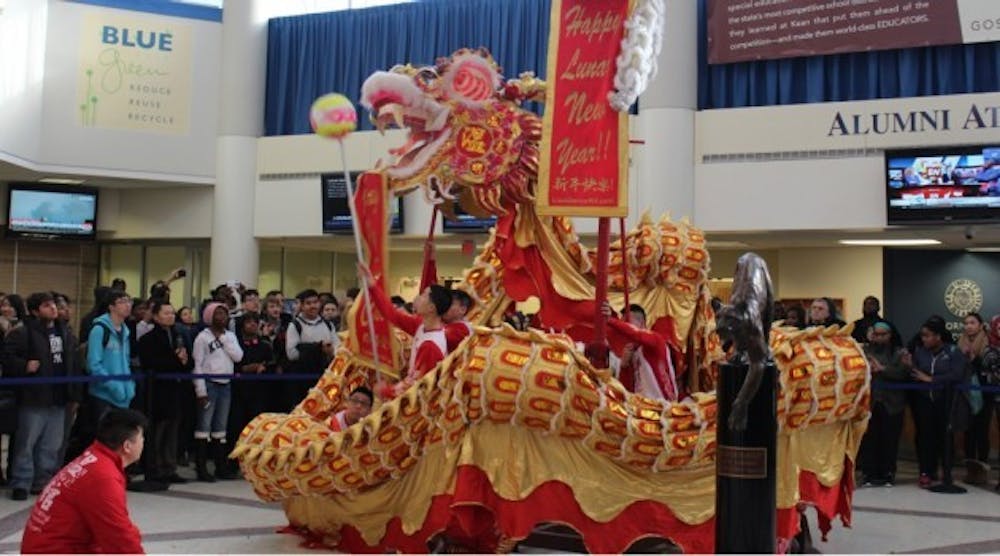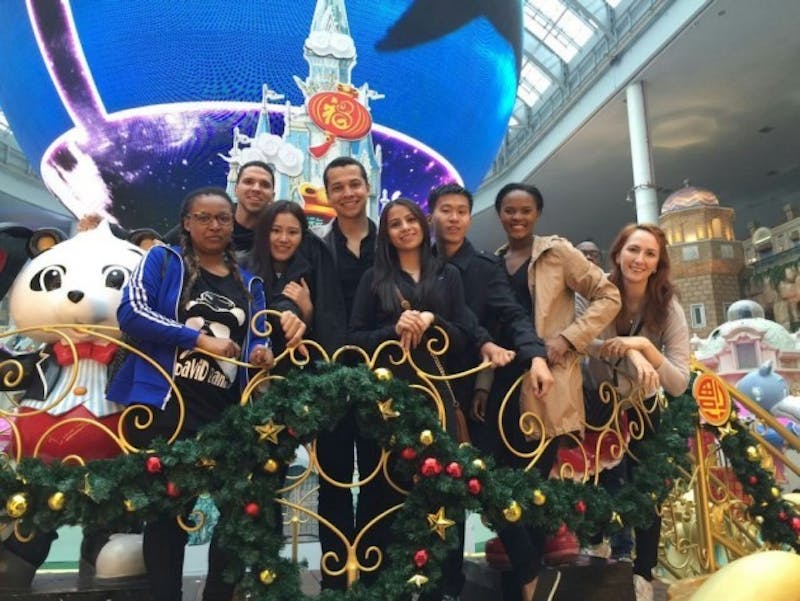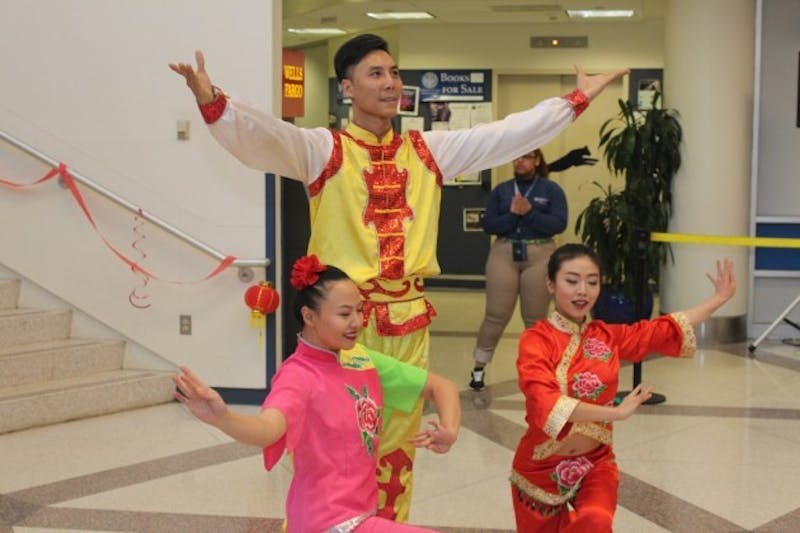As students walked through the atrium of the University Center [UC] on Monday, February 23, 2015 during college hour, some were curious as to what the extravaganza was in honor of. The event, hosted by Student Organization and Asian Studies, was Chinese New Year, which officially celebrated the beginning of a new year—the year of the sheep, ram, and goat—on Thursday, February 19, 2015. The Kean University community came together and experienced the concoction of sound and vibrant colors that consumes the holiday. “Chinese New Year is like [the] American Thanksgiving, it is the biggest event of [the] year, [and] every member tries to go home and have a family reunion,” commented Director of Asian Studies Xurong Kong.
What is the origin of the Chinese New Year, though? The centuries-long tradition all began with fear. Once upon a time, there was Nian—which translates into “year”—a lion-like mythical creature that wreaked havoc by preying on the townspeople. The villagers were told that loud noises consisting of drums and firecrackers and placing red paper on the outside of their doors would defend them against Nian because the creature is frightened by the color red. When Nian was defeated, the Chinese acknowledged guo nian, in translation “the passing of Nian” or “new year”.
China makes use of the lunar calendar compared to the Gregorian calendar used in Western Civilization. Following the moon’s orbit around Earth, Chinese New Year falls on the date of the second new moon following the winter solstice. The holiday is supposed to be only a week long, but the festivities overflow into 15 days’ worth of celebration. Much like the goings-on that took place in the UC, the actual holiday consists of a myriad of drums, firecrackers, glowing red lanterns, and calligraphy hangings, all lined up along streets creating an environment that’s crackling with energy. Children are consumed with excitement and gratitude as they open up red envelopes containing money. “It also carries rich memory for [an] individual and for society as well, such as making flower buns, clean[ing] houses before [the] new year, and…visiting relatives,” stated Kong.
It has been a long-standing tradition at Kean University to celebrate Chinese New Year. What makes this an even more special event each year is the fact that Kean University has three campuses, one of which is located in China. Forging a connection with its sister campus, organizations on the primary campus in Union incorporate the aspects included in this holiday as celebrated in its country of origin. Kean University is its own community, but this has never stopped the members of the community to branch out and become acquainted with the practices of other communities around the world. Kong elaborated on the goal of hosting events such as Chinese New Year, “[They] let more students and people understand and appreciate foreign culture and prepare our next generation to be qualified global citizen[s].” A new year in any culture signifies another opportunity. Although individuals cannot be given a complete fresh start, they are given the opportunity to take on the mindset of putting what happened in the past year behind them, using the lessons learned to their benefit in the year to come.





